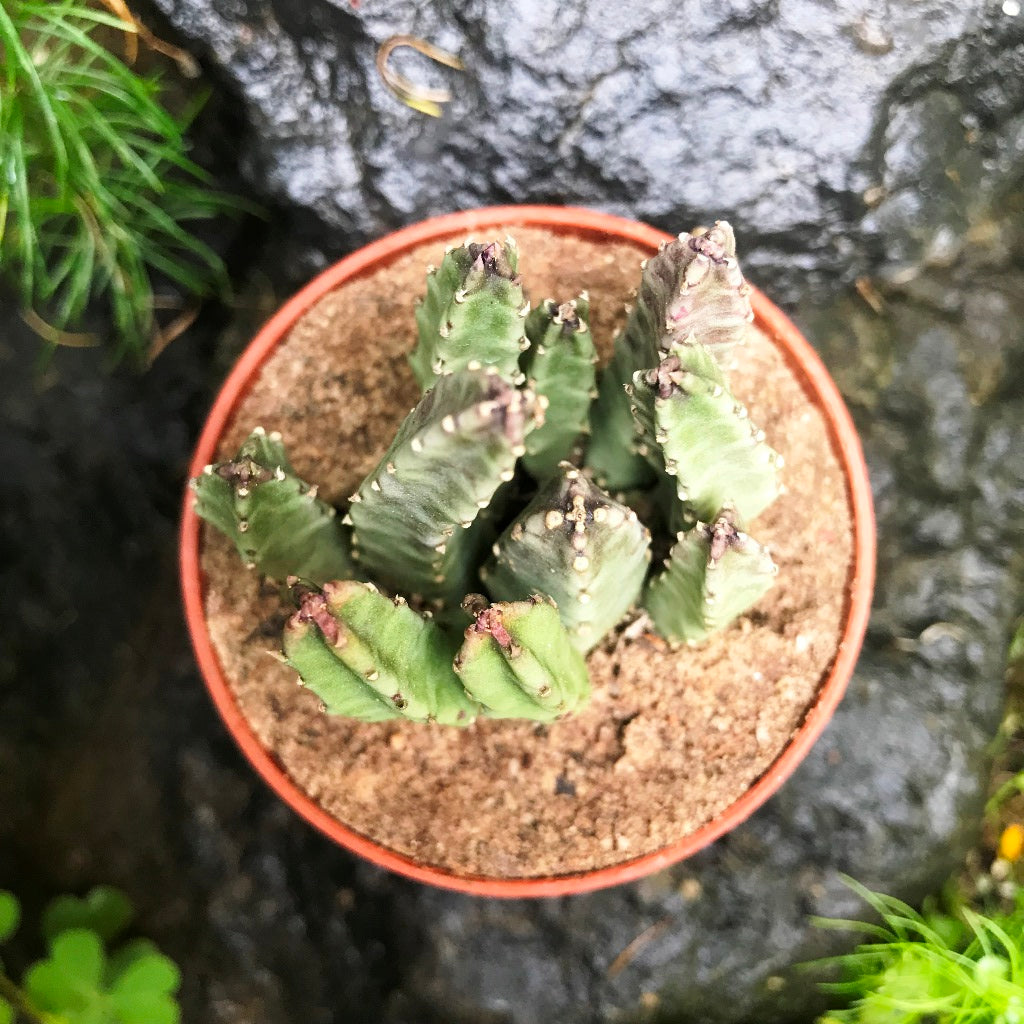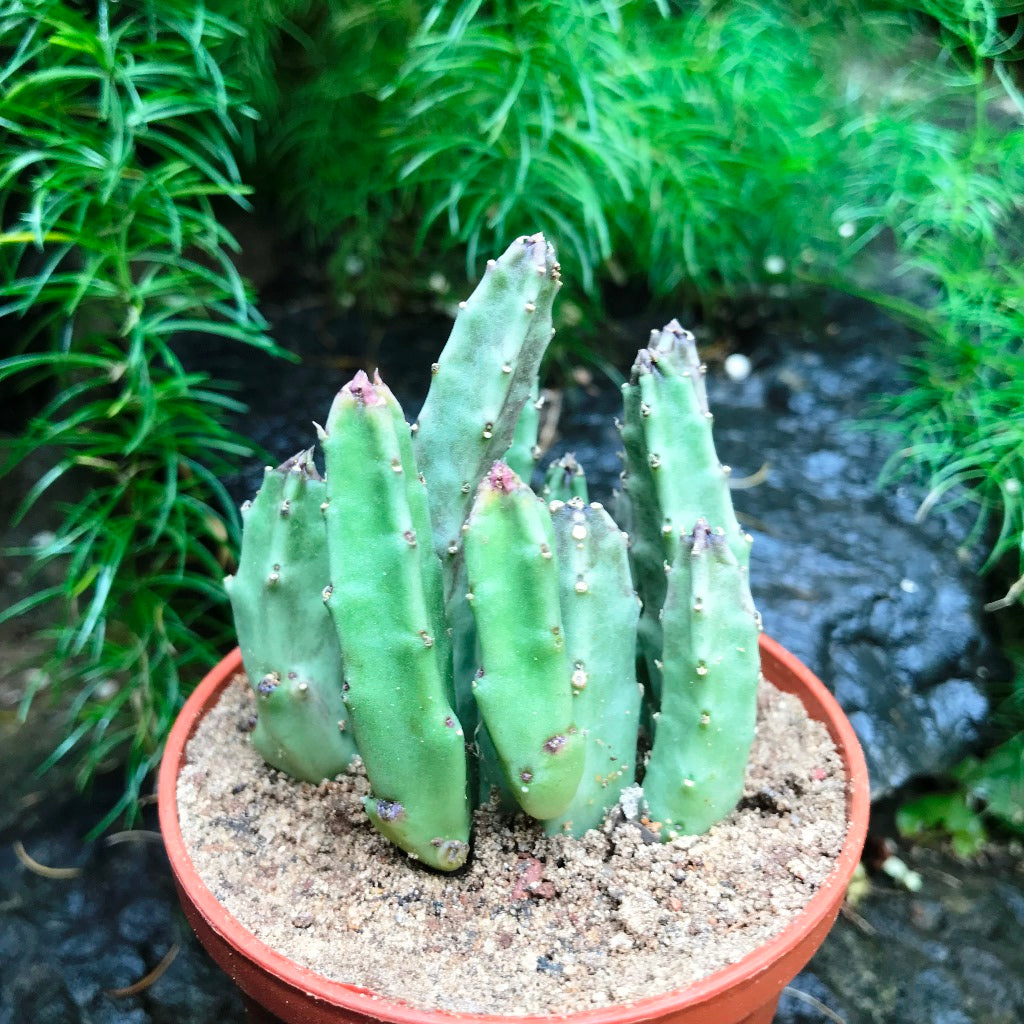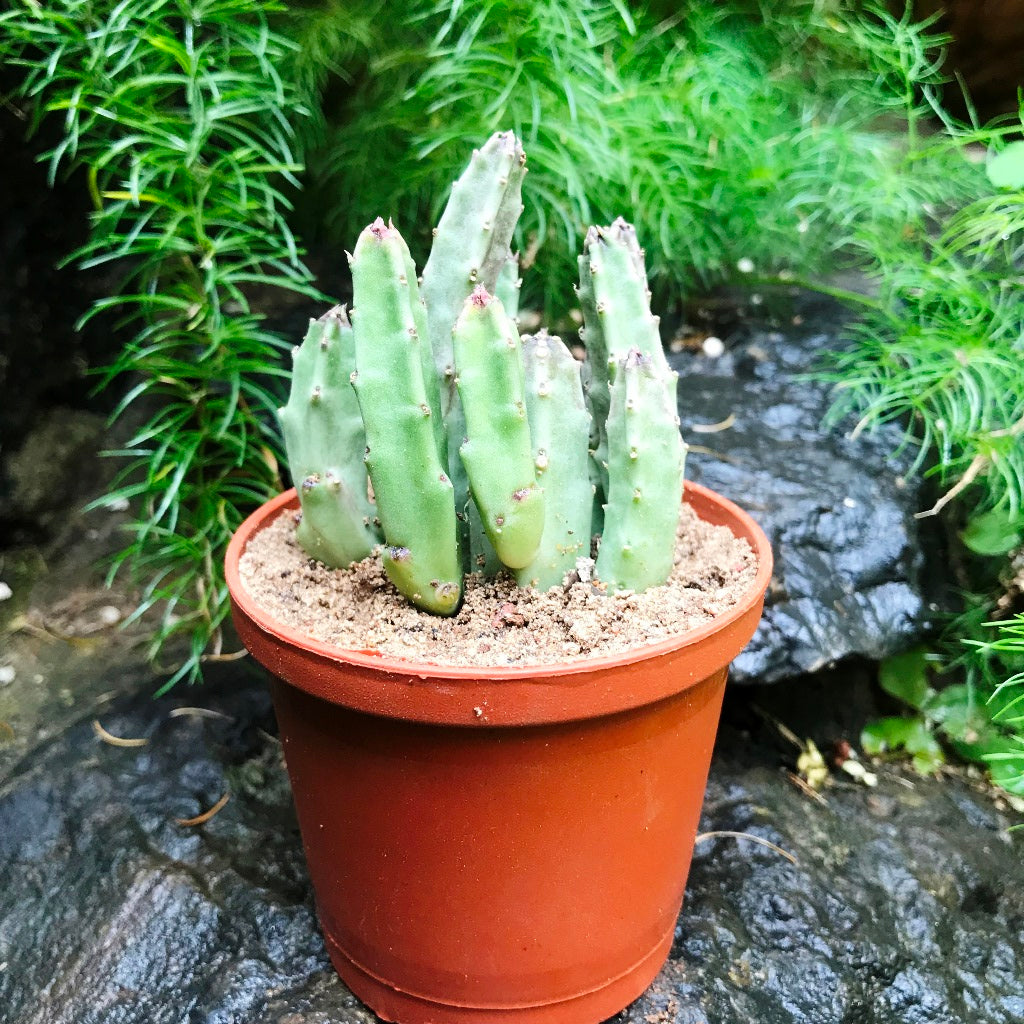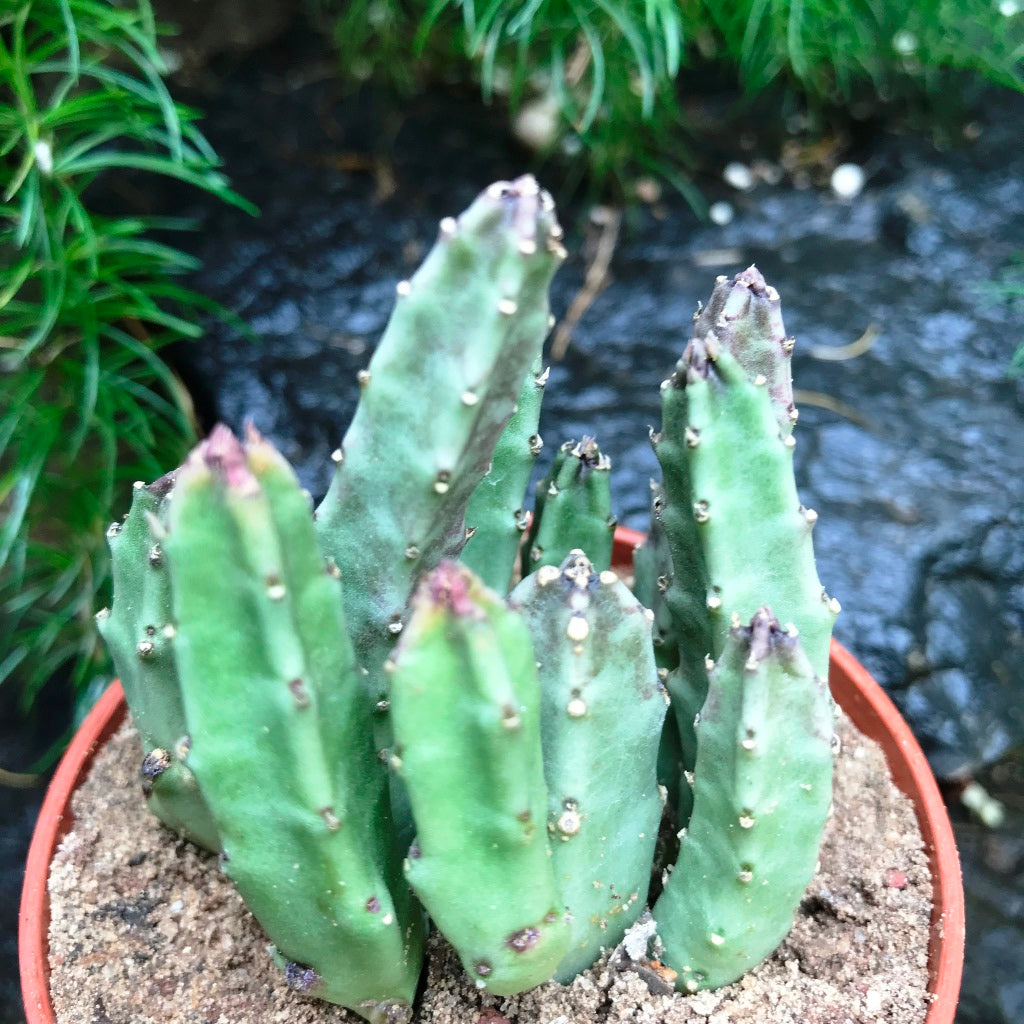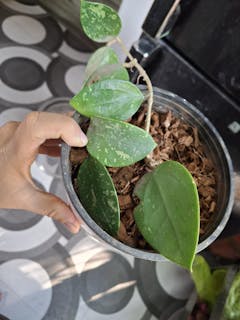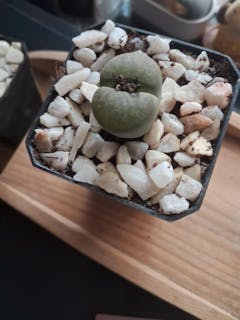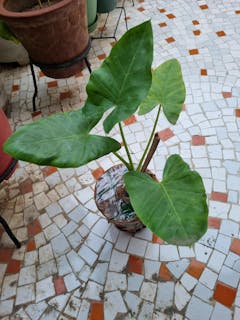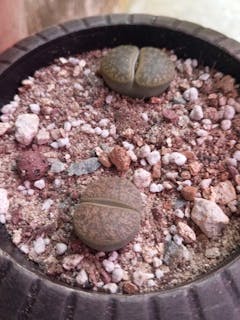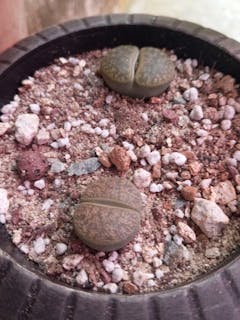Maroon Cup Starsh
Family
Apocynaceae
Native
Swaziland
Description
Stapelia schinzii var. angolensis is known by its very handsome and highly curious dark red to maroon flowers with hairs along the edges of the petals. It is similar to var. angolensis, but has generally smaller flowers ( only about 8 cm in diameter) borne on more slender, scarcely toothed stems which adopt a creeping habit.
The stems are creeping, green, mostly purple-mottled and up 6-7.5 cm long, 1.5 cm across, with winged angles, hairless or minutely roughened at first, tubercles decurrent, with a minute tooth at the base of the ultimately marcescent tips. Stems are quadrangular, a factor which allows expansion and contraction to compensate without harm for any excess or shortness of fluids inside; hence they may appear flat- or sunken-sided according to the availability of water. This is the "succulence" and a storehouse for nutrients, which are crucial to their survival in harsh, xeric habitats.
Environment
Stapelia schinzii var. Angolensis is a very easy plant to grow and requires very few requirements. It is one of the most resistant plants within the genus Stapelia after Stapelia gigantea and Stapelia hirsuta.
In general they are drought-resistant succulents suited for rockeries, and the small-flowered species are suitable as container Cactus.
They are excellent subjects for a water-wise garden, Provided that they are not over-watered and are given a warm position.
They like a sunny position and will also grow in light, semishade in hot climates. The soil should have good drainage
Landscape Uses
Some large-flowered species make a good show when grown in masses in the garden.


